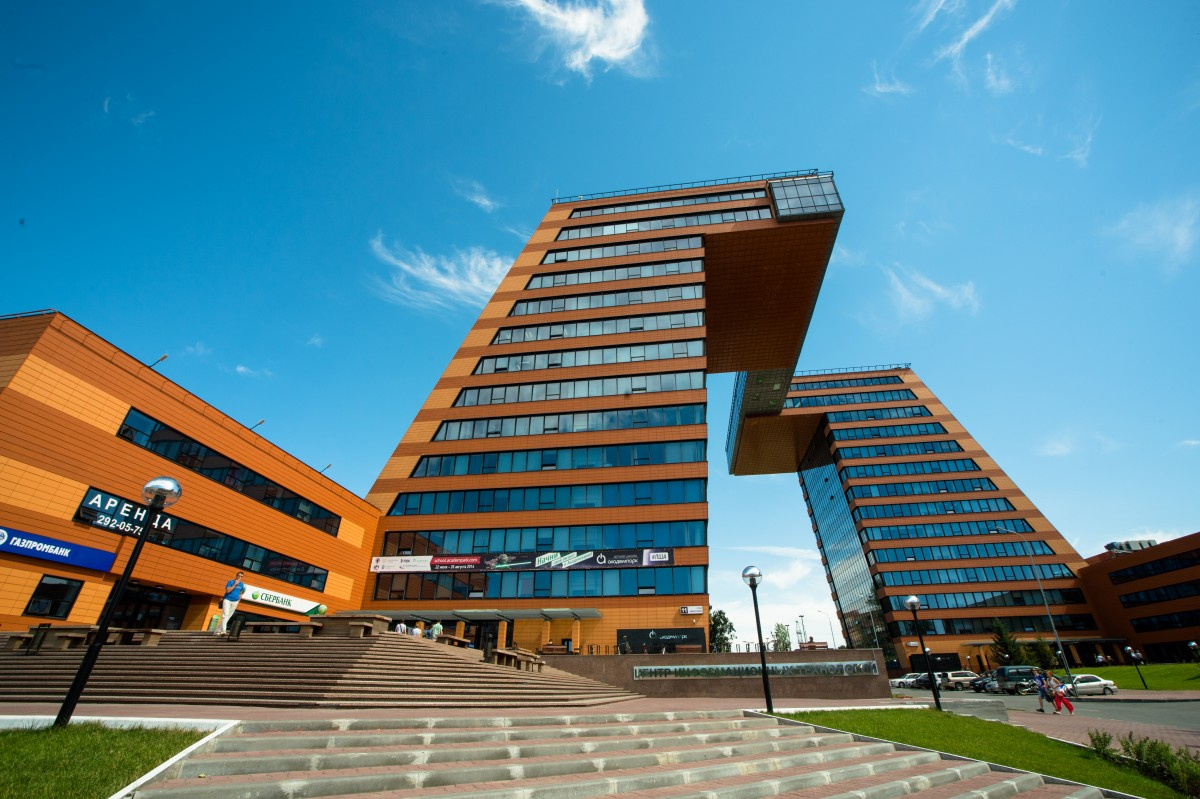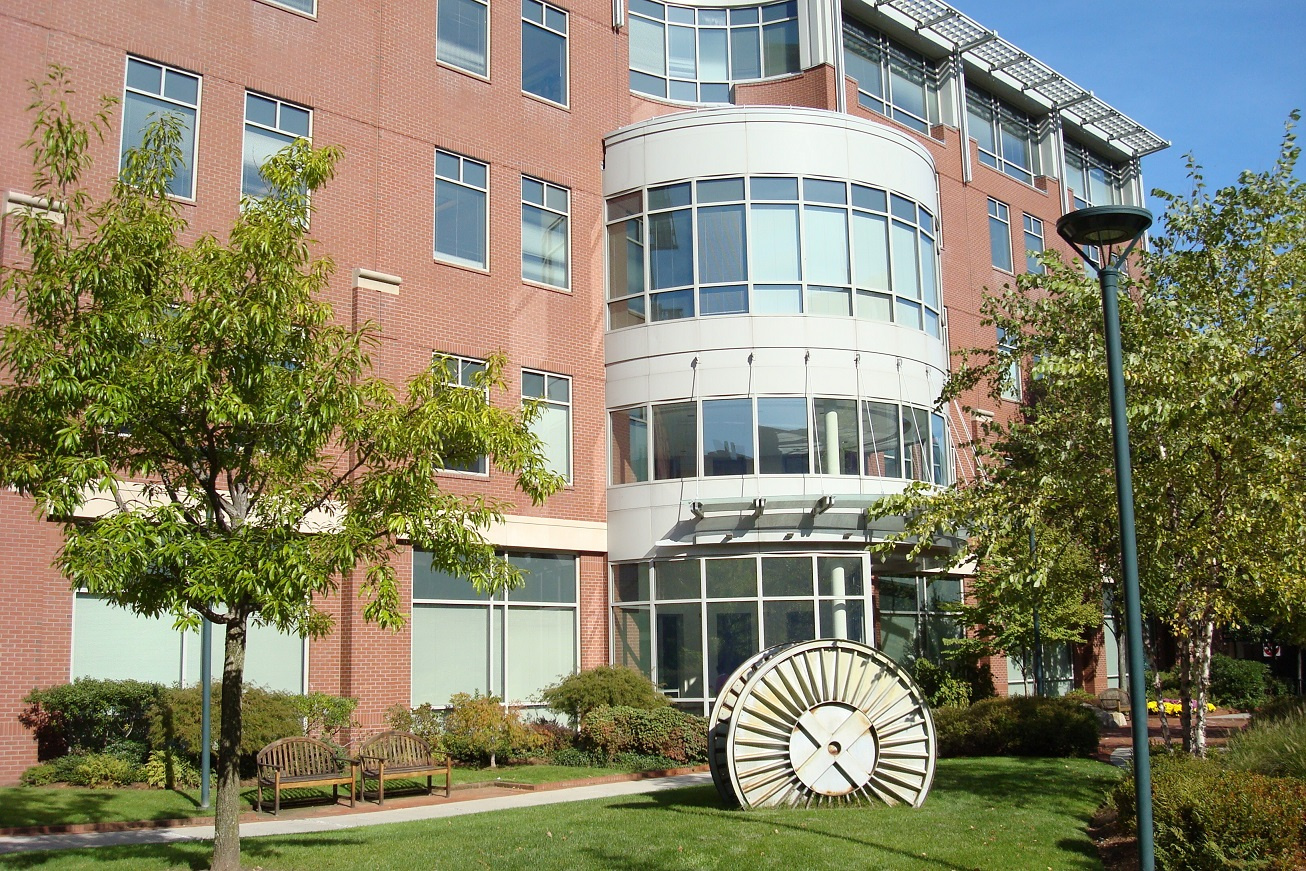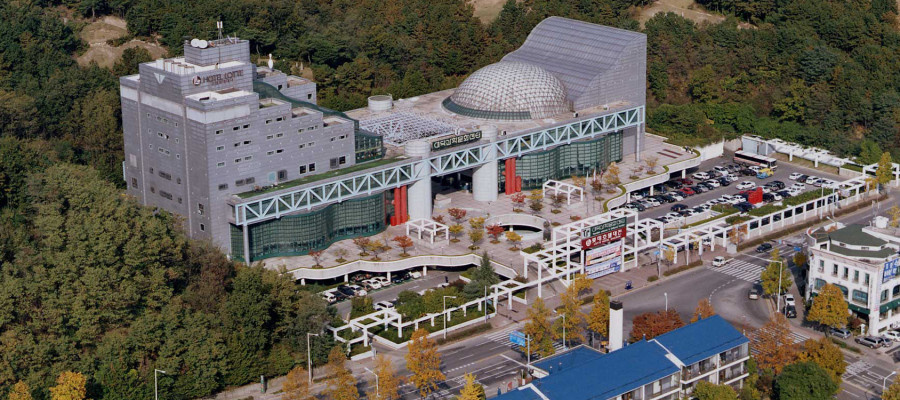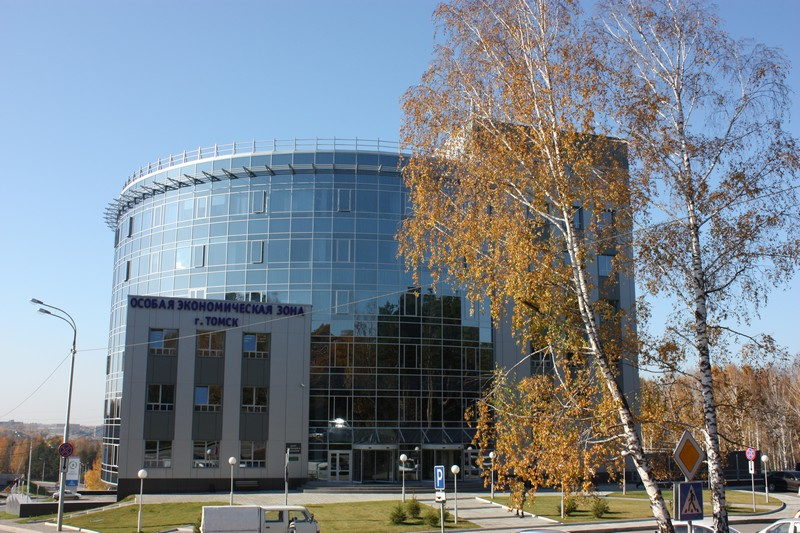Technoparks of the world and Russia
The term “innovation ecosystem” is used to denote the system of educational institutions, investment funds, production facilities, public and private enterprises involved in the development and introduction of new technologies. This concept includes both infrastructure, and mechanisms, and communities. One of the important structural components of the innovation ecosystem is technology parks, research parks at higher educational institutions.
World experience has shown that the development of innovations is associated with the emergence of small innovative entrepreneurship, which originates in and near universities. Although not always students get a diploma. Technoparks are preparing both new technologies and personnel for corporations, and can also be used to develop specific industries and fight against “personnel hunger”. Among the mechanisms that are used for this are grants, tax breaks and low-cost rental of premises.
If your company works or has worked in Russian or foreign technoparks, please write in the comments and tell us about your experience.
')

In 1971, journalist Don Hefler began publishing a series of articles on US Silicon Valley, and this title determined the name of the world-famous San Francisco territory. This place was previously distinguished by an abundance of advanced technologies. In 1909, the first radio station in the United States was opened in San Jose, and a year later the Federal Telegraph Corporation in Palo Alto was opened. The company FTC in the next ten years, created the world's first global radio network. After the US Navy deployed a hangar with airships on the coast, technology companies grew around the base to serve its needs. After the closure of the airship development program, the National Aeronautical Advisory Council, the predecessor of NASA, also engaged in advanced aviation research, took the place of the airbase.
After World War II, when the number of students increased dramatically at Stanford, the university needed additional funds. Sell 32 square kilometers of land was impossible because of the testament of the founder of the university. Professor Frederick Emmons Terman has found another way - to start donating land for long-term rent for offices and production. The tenants had an important requirement: they had to be a high-tech company. Now students could find a job near the place of study. This is how the first US industrial park - Stanford Industrial Park. One of the first offices opened in Eastman Kodak, General Electric, Shockley Semiconductor Laboratory, Lockheed. Yes, and Hewlett-Packard soon opened its new office here.
It is now called Stanford Research Park , it has more than 150 companies, it has a developed transport infrastructure, and can be reached on foot from the campus center of Stanford University. 20 years ago, VMware rented a tiny office with an area of less than 50 square meters and now employs 19,000 people.

One of the largest research parks in the world operates in North Carolina, USA. It is called the "Research Triangle" - Research Triangle Park . It operates with three universities located in three cities: Duke University in Durham, North Carolina State University in Raleigh and the University of North Carolina in Chapel Hill . The park is also one of the oldest, it was created by state authorities and municipalities in the interests of universities and local businesses. The Research Triangle occupies 2,800 hectares, it has more than 200 companies with 50,000 employees, including IBM with an office of 14,000 people and Cisco Systems with 5,000 employees.
The research park has special tax conditions. For every $ 100 of property valuation, taxes are no more than 10 cents.

So the park will have to look after redevelopment, which will spend $ 50 million.

The area where the University of Massachusetts University of Technology is located today was once a marshland by the Charles River, where an artillery battery was located during the siege of Boston Britain. In the 1850s, a railroad was laid along the river. Several industries have appeared here, including the Simplex Wire & Cable Company, the Kennedy Biscuit Company, the Necco sweets factory, the Sears shoe factory and the Ford assembly shop.
In 1969, the Simplex moved out. At that time, most of the buildings were destroyed or empty. This went on for many years, while the Massachusetts Institute of Technology was looking for an application for 110 thousand square meters of property. In 1983, the institute chose Forest City Enterprise for land development, and in 1985 approved a master plan.
Today, the University Park has offices, laboratories and residential buildings. The project included 531 apartments for rent. Buildings Kennedy Biscuit and Ford turned into lofts for offices.

In the late 1960s, universities in Great Britain were faced with the task of strengthening their ties with the knowledge-intensive industry. At the local level, the problem was solved through the creation of technology parks. In order to get the maximum benefit from Cambridge's knowledge, equipment and human capital, it was decided to create a science park. Great Britain at that time had already lost its leading position in the global market for innovation.
In 1973, on the land belonging to Trinity College , they began to build and lay roads, and the official opening of the park took place in 1975. Trinity College provides visitors to the apartment, the science park is open to new companies. Among the working enterprises in the science park is a branch of Philips. Most of the tenants belong to small high-tech companies.
Toshiba and the Faculty of Physics at the University of Cambridge have organized a joint venture to use the effects of quantum physics to create 21st century technologies. Similarly, other companies make the most of the potential of the university for the development and implementation of new technologies.

Over the past 10 years, the University of Surrey , in the town of Guilford, UK, more than half of research project funding comes from independent sources.
The Surrey Research Park operates under the direction of the university. The university rents offices equipped with Internet, telephones, faxes, provides parking and provides the administration.
One of Japan’s leading universities, the University of Tsukuba, is less than an hour’s drive from Central Tokyo. The city of Tsukuba is called the “Scientific City” of Japan: the Research Institute of Industrial Technologies, Agriculture, and the Japan Aerospace Exploration Agency (JAXA) work here. In 1985, the World Expo-85 was held here.
Initially, the city was supposed to relieve the overpopulated Tokyo and become a national center for fundamental scientific research. In 1963 the city plan was approved, in 1980 it was completed. In the 2000s, 60 national research institutes and two universities already worked here, as well as 240 private research institutions.
The government has developed and implements special programs for the development of national technology parks: “Technopolis Development Plan”, including the provision of subsidies and low-interest loans for venture business, discounts on the rental of industrial facilities and buildings; "Plan for the placement of scientific production", involving the territorial concentration of regional industries and their association by specialization; “Basic research plan”, which promotes the development of the enterprise at the initial stages of its existence.
Local governments receive maximum rights from national authorities to provide additional benefits to project participants, including exemption from local taxes, allocation of grants and loans from budgets.

The analogue of the Japanese technopolis Tsukuba in Korea is the city of science Daeduk . It was opened in 1973, the first organization in it was the Korean Institute of Science and Technology - KAIST .
More than 20 research institutes and 40 corporate research centers operate on the territory of the technopark.

In the late 1980s and early 1990s, the formation of the first wave of science and technology parks began in Russia. Such parks began to be considered as divisions of universities. The first technopark in the Russian Federation was created in 1990 - this is Tomsk Science and Technology Park. In the same year, at the first international seminar on technoparks in the country, a decision was made to establish an association of science and technology parks on the basis of universities - the Technopark association.
The Tomsk International Business Center "Technopark" has the infrastructure for holding exhibitions - squares, a conference hall, transportation and equipment. It houses the Tomsk Regional Center for Technology Transfer (TRTCT), which helps small high-tech enterprises to promote innovative developments and products to the market.
Technopark and technology transfer center operate in a “special economic zone of technology-innovative type”, created in 2005. From 2005 to 2015, the residents of the SEZ produced goods for 8.3 billion rubles, paid taxes to the budgets of all levels in the amount of 1.4 billion rubles, even taking into account tax exemptions. According to data for 2015, more than 2 thousand jobs were created in the special economic zone with an average salary of 45 thousand rubles without managers, while the average salary in Tomsk in 2015 was 33,300 rubles. In total, 67 companies were operating in the zone at that time.

The basis for the creation of technoparks initially became campuses, in which an ecosystem was already formed. For example, in the USSR in 1956 the Academgorodok was created in Novosibirsk. The Novosibirsk scientific town, which before the appearance of the concept of "Silicon Valley" was called the "Golden Valley", is successfully operating now.
Levan Tatunashvili works as an innovation adviser at Novosibirsk State University and as deputy general director of a technopark at the same time. He is sure that it is impossible to consider the NSU without the campus and the community that has been formed on their basis over the past 60 years. The university itself is a collection of audiences, which is implemented at the expense of the ecosystem existing in the academic campus. And 50% of managers of innovative and large companies in the technopark are either heads of departments, or university staff. In this case, it is difficult to draw the line, how much of the innovation relates to the university, and how much to the technology park. Therefore, Tatunashvili sticks to the wording “Made in the campus”, and not at the NSU or the technopark.

In the early 60s, Zelenograd, situated near Moscow, was initially the first information technology center of the USSR. It was originally conceived only as a “satellite city” outside Moscow. In Zelenograd, the Moscow Institute of Electronic Technology trained specialists, research institutes and design bureaus developed technical processes, components, components and complete electronic systems and software, and factories accepted the results of development in pilot and mass production.
Almost the entire population of the 130,000th city worked in microelectronics or urban enterprises. In the USA, this city was sometimes called the Soviet Silicon Valley .

Today, 60 technoparks are operating in Russia in 35 regions, they were created in 27 years. In the US, about 170 research and science parks have opened in the last 67 years.
Creating a Technopark near the university is useful for both the educational institution and its students. On the one hand, students get the opportunity to open their own startup next to the alma mater, bring the idea to commercialization and become a new Ilon Mask or an employee of a large company renting an office in a technopark. On the other hand, the university participates in the activity of the technology park and claims to participate in the commercialization of research and development results, that is, it earns money on the products of firms in the territory of the technology park and university graduates. Students and scientists receive an incentive to develop entrepreneurial initiatives.
World experience has shown that the development of innovations is associated with the emergence of small innovative entrepreneurship, which originates in and near universities. Although not always students get a diploma. Technoparks are preparing both new technologies and personnel for corporations, and can also be used to develop specific industries and fight against “personnel hunger”. Among the mechanisms that are used for this are grants, tax breaks and low-cost rental of premises.
If your company works or has worked in Russian or foreign technoparks, please write in the comments and tell us about your experience.
')

USA
In 1971, journalist Don Hefler began publishing a series of articles on US Silicon Valley, and this title determined the name of the world-famous San Francisco territory. This place was previously distinguished by an abundance of advanced technologies. In 1909, the first radio station in the United States was opened in San Jose, and a year later the Federal Telegraph Corporation in Palo Alto was opened. The company FTC in the next ten years, created the world's first global radio network. After the US Navy deployed a hangar with airships on the coast, technology companies grew around the base to serve its needs. After the closure of the airship development program, the National Aeronautical Advisory Council, the predecessor of NASA, also engaged in advanced aviation research, took the place of the airbase.
After World War II, when the number of students increased dramatically at Stanford, the university needed additional funds. Sell 32 square kilometers of land was impossible because of the testament of the founder of the university. Professor Frederick Emmons Terman has found another way - to start donating land for long-term rent for offices and production. The tenants had an important requirement: they had to be a high-tech company. Now students could find a job near the place of study. This is how the first US industrial park - Stanford Industrial Park. One of the first offices opened in Eastman Kodak, General Electric, Shockley Semiconductor Laboratory, Lockheed. Yes, and Hewlett-Packard soon opened its new office here.
It is now called Stanford Research Park , it has more than 150 companies, it has a developed transport infrastructure, and can be reached on foot from the campus center of Stanford University. 20 years ago, VMware rented a tiny office with an area of less than 50 square meters and now employs 19,000 people.

One of the largest research parks in the world operates in North Carolina, USA. It is called the "Research Triangle" - Research Triangle Park . It operates with three universities located in three cities: Duke University in Durham, North Carolina State University in Raleigh and the University of North Carolina in Chapel Hill . The park is also one of the oldest, it was created by state authorities and municipalities in the interests of universities and local businesses. The Research Triangle occupies 2,800 hectares, it has more than 200 companies with 50,000 employees, including IBM with an office of 14,000 people and Cisco Systems with 5,000 employees.
The research park has special tax conditions. For every $ 100 of property valuation, taxes are no more than 10 cents.

So the park will have to look after redevelopment, which will spend $ 50 million.

The area where the University of Massachusetts University of Technology is located today was once a marshland by the Charles River, where an artillery battery was located during the siege of Boston Britain. In the 1850s, a railroad was laid along the river. Several industries have appeared here, including the Simplex Wire & Cable Company, the Kennedy Biscuit Company, the Necco sweets factory, the Sears shoe factory and the Ford assembly shop.
In 1969, the Simplex moved out. At that time, most of the buildings were destroyed or empty. This went on for many years, while the Massachusetts Institute of Technology was looking for an application for 110 thousand square meters of property. In 1983, the institute chose Forest City Enterprise for land development, and in 1985 approved a master plan.
Today, the University Park has offices, laboratories and residential buildings. The project included 531 apartments for rent. Buildings Kennedy Biscuit and Ford turned into lofts for offices.

Great Britain
In the late 1960s, universities in Great Britain were faced with the task of strengthening their ties with the knowledge-intensive industry. At the local level, the problem was solved through the creation of technology parks. In order to get the maximum benefit from Cambridge's knowledge, equipment and human capital, it was decided to create a science park. Great Britain at that time had already lost its leading position in the global market for innovation.
In 1973, on the land belonging to Trinity College , they began to build and lay roads, and the official opening of the park took place in 1975. Trinity College provides visitors to the apartment, the science park is open to new companies. Among the working enterprises in the science park is a branch of Philips. Most of the tenants belong to small high-tech companies.
Toshiba and the Faculty of Physics at the University of Cambridge have organized a joint venture to use the effects of quantum physics to create 21st century technologies. Similarly, other companies make the most of the potential of the university for the development and implementation of new technologies.

Over the past 10 years, the University of Surrey , in the town of Guilford, UK, more than half of research project funding comes from independent sources.
The Surrey Research Park operates under the direction of the university. The university rents offices equipped with Internet, telephones, faxes, provides parking and provides the administration.
Japan
One of Japan’s leading universities, the University of Tsukuba, is less than an hour’s drive from Central Tokyo. The city of Tsukuba is called the “Scientific City” of Japan: the Research Institute of Industrial Technologies, Agriculture, and the Japan Aerospace Exploration Agency (JAXA) work here. In 1985, the World Expo-85 was held here.
Initially, the city was supposed to relieve the overpopulated Tokyo and become a national center for fundamental scientific research. In 1963 the city plan was approved, in 1980 it was completed. In the 2000s, 60 national research institutes and two universities already worked here, as well as 240 private research institutions.
The government has developed and implements special programs for the development of national technology parks: “Technopolis Development Plan”, including the provision of subsidies and low-interest loans for venture business, discounts on the rental of industrial facilities and buildings; "Plan for the placement of scientific production", involving the territorial concentration of regional industries and their association by specialization; “Basic research plan”, which promotes the development of the enterprise at the initial stages of its existence.
Local governments receive maximum rights from national authorities to provide additional benefits to project participants, including exemption from local taxes, allocation of grants and loans from budgets.

The Republic of Korea
The analogue of the Japanese technopolis Tsukuba in Korea is the city of science Daeduk . It was opened in 1973, the first organization in it was the Korean Institute of Science and Technology - KAIST .
More than 20 research institutes and 40 corporate research centers operate on the territory of the technopark.

USSR and Russia
In the late 1980s and early 1990s, the formation of the first wave of science and technology parks began in Russia. Such parks began to be considered as divisions of universities. The first technopark in the Russian Federation was created in 1990 - this is Tomsk Science and Technology Park. In the same year, at the first international seminar on technoparks in the country, a decision was made to establish an association of science and technology parks on the basis of universities - the Technopark association.
The Tomsk International Business Center "Technopark" has the infrastructure for holding exhibitions - squares, a conference hall, transportation and equipment. It houses the Tomsk Regional Center for Technology Transfer (TRTCT), which helps small high-tech enterprises to promote innovative developments and products to the market.
Technopark and technology transfer center operate in a “special economic zone of technology-innovative type”, created in 2005. From 2005 to 2015, the residents of the SEZ produced goods for 8.3 billion rubles, paid taxes to the budgets of all levels in the amount of 1.4 billion rubles, even taking into account tax exemptions. According to data for 2015, more than 2 thousand jobs were created in the special economic zone with an average salary of 45 thousand rubles without managers, while the average salary in Tomsk in 2015 was 33,300 rubles. In total, 67 companies were operating in the zone at that time.

The basis for the creation of technoparks initially became campuses, in which an ecosystem was already formed. For example, in the USSR in 1956 the Academgorodok was created in Novosibirsk. The Novosibirsk scientific town, which before the appearance of the concept of "Silicon Valley" was called the "Golden Valley", is successfully operating now.
Levan Tatunashvili works as an innovation adviser at Novosibirsk State University and as deputy general director of a technopark at the same time. He is sure that it is impossible to consider the NSU without the campus and the community that has been formed on their basis over the past 60 years. The university itself is a collection of audiences, which is implemented at the expense of the ecosystem existing in the academic campus. And 50% of managers of innovative and large companies in the technopark are either heads of departments, or university staff. In this case, it is difficult to draw the line, how much of the innovation relates to the university, and how much to the technology park. Therefore, Tatunashvili sticks to the wording “Made in the campus”, and not at the NSU or the technopark.

In the early 60s, Zelenograd, situated near Moscow, was initially the first information technology center of the USSR. It was originally conceived only as a “satellite city” outside Moscow. In Zelenograd, the Moscow Institute of Electronic Technology trained specialists, research institutes and design bureaus developed technical processes, components, components and complete electronic systems and software, and factories accepted the results of development in pilot and mass production.
Almost the entire population of the 130,000th city worked in microelectronics or urban enterprises. In the USA, this city was sometimes called the Soviet Silicon Valley .

Today, 60 technoparks are operating in Russia in 35 regions, they were created in 27 years. In the US, about 170 research and science parks have opened in the last 67 years.
Creating a Technopark near the university is useful for both the educational institution and its students. On the one hand, students get the opportunity to open their own startup next to the alma mater, bring the idea to commercialization and become a new Ilon Mask or an employee of a large company renting an office in a technopark. On the other hand, the university participates in the activity of the technology park and claims to participate in the commercialization of research and development results, that is, it earns money on the products of firms in the territory of the technology park and university graduates. Students and scientists receive an incentive to develop entrepreneurial initiatives.
Source: https://habr.com/ru/post/373657/
All Articles